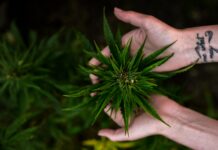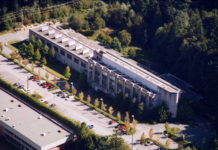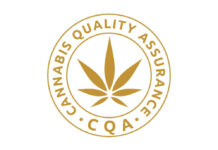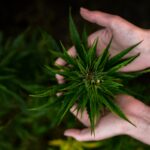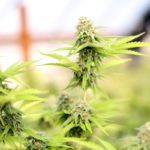With legalization on the horizon, Canada’s First Nations
people are faced with yet another potential battle over jurisdiction.
By Jamie Shaw
(The author would like to apologize for the excessive use of the word “Indian” when not referring to those from India. While our government has finally started calling cannabis by its proper name, our laws, and therefore our legislators and courts, still use “Indian” when describing Canada’s First Nations people. The U.S. legal term “Native” isn’t much better.)
When it comes to predicting how legalization will affect Canada’s First Nations, we can start by looking southward.
In the United States, there are issues playing out around cannabis that lead to some very interesting questions regarding federal law versus state law, particularly when it comes to Native reserves. Obviously, in those states that have legalized cannabis (medical or otherwise), state law seems to hold more sway than federal law, or at least federal prohibition, though this has yet to truly be tested in a court of a law.
Under the Obama administration, the U.S. federal government came out and said that, basically, Native reserves were free to do what they like with cannabis—despite this, state law seems to be holding more power in practice here, too, as tribes in prohibition states haven’t really tested this either.
In Canada, reserve land holds an interesting place in jurisdictional law, and we’re still not sure exactly what that is. While the Canadian federal government’s cannabis legalization proposal, Bill C-45, keeps jurisdiction over licensing producers, it hands over the reins of wholesale and distribution to the provinces. This simple, logical extension of the existing power-sharing structure unfortunately lands smack-dab in the middle of an extremely complex and longstanding constitutional issue: what exactly can First Nations people do, both on a reserve and off?
Despite having over 150 years since Confederation to sort out where First Nations’ rights (particularly on reserves) fit within the hierarchy of Canadian jurisprudence, we still have not done so.
The legal crux of the issue actually begins 104 years before Confederation, with the Royal Proclamation of 1763. This law clearly set aside vast tracts of land over which First Nations had some measure of autonomy, and attempted to prevent further encroachment onto those and other lands—however, there is still debate over whether or not this document actually recognized First Nations’ rights.
Various treaties differed from the Proclamation, and the passing of the Indian Act of 1876—meant to address these inconsistencies—only muddied the waters further. Amendments over the years have seen government agents get deciding votes at band council meetings, the establishment of residential schools and a host of other culturally devastating and suppressing laws (such as banning cultural practices like the potlatch) and dehumanizing laws (like the prohibition on hiring a lawyer to press for rights).
With over 20 amendments, the Act admittedly looks a little different today, but many of the provisions are still troublesome. The courts in particular have been having a hard time with the definitions of “Indian,” “Reserves” and all of Section 88.
Section 88 states that those “laws of general application” in force in a province are applicable to First Nations. While there is an exception that follows, we’ve already run into trouble.
In 1977, a man named Alex Frank, from the Little Pine First Nation in Saskatchewan, was charged for illegal possession of moose meat under the Alberta Wildlife Act. After a provincial court threw out the charge based on the defendant’s status, the province appealed, and the convictions were upheld and reinstated. This was then appealed by the defendant in the Supreme Court of Canada as Frank v R., in a case involving multiple provincial and federal Acts dating back to 1930, the Acts creating the provinces of Alberta and Saskatchewan and a treaty dating back to 1876. For moose meat. The Supreme Court found for Frank.
More recently, in 2009, a Saskatchewan provincial court judge ruled that provincial laws do not apply on Indian reserves. The case has not made its way to the Supreme Court of Canada, and so, despite numerous cases over the last 50 years, there is still no clarity on this issue…and that’s when there is already some clarity in the form of a treaty.
Not all tribes even have treaties; in fact, one attempt to establish such a treaty turned into the longest-running land-claim case in all of Canadian history.
Gitksan and Wet’suwet’en v Province of British Columbia was first filed in the Supreme Court of B.C. in 1984, when 35 Gitxsan and 13 Wet’suwet’en hereditary chiefs claimed official title over their land. The Province of B.C. claimed all rights had been extinguished.
Thirteen years later, when the ruling finally came down, the chief justice found for the province. Two years after that, the B.C. Court of Appeal unanimously threw out this ruling, and it headed to the Supreme Court of Canada as Delgamuukw v British Columbia.
When that court’s decision came down in 1997, it didn’t actually find for the appellant or the defendant (a new trial was ordered). Despite this, it did establish that provinces could “in-fringe” on First Nations’ rights, but could not “extinguish” them.
It also established that the constitutionality of Section 88 could be legitimately questioned…though it was not the matter in front of the court. Further, it established that the government of B.C. has been violating Aboriginal title in an unconstitutional (and therefore illegal) manner ever since it joined confederation in 1871…though, again, that was not the matter before the court.
Making matters worse, earlier provisions in the Indian Act that saw federal “Indian agents” oversee band council elections and even vote on those councils have led to deep divisions in many First Nations. The band council elections that the government recognizes are not always the same as those seen as the legitimate elders of the community, which actually further complicates matters.
The federal government has very clearly stated what jurisdiction the Provinces will have, but does this apply on Reserves? We still don’t know exactly, and we haven’t even gotten to the “exception” part yet: what happens if a reserve passes a law that is currently considered provincial jurisdiction? This isn’t just a “what-if” scenario, it’s one we’re likely to see play out in the courts in the near future.
Some reserves intend to follow Akwesasne’s lead in obtaining their own federally licensed production facility, or will emulate the Listuguj in New Brunswick who will host a Zenabis site, and Manitoba’s licensing rules spurred First Nations there to be involved with retail. These are all cases where First Nations people are willingly submitting to federal and provincial law. However, as we’ve seen recently with the Report of the Standing Senate Committee on Aboriginal Peoples, not all First Nations are eager to participate in the market as proposed in Bill C-45. Further, while a call for delay is one thing, there are already places where future Section 88 legal challenges have raised their head, like Tobique in New Brunswick, and Tyendinaga in Ontario.
The Indian Act states that reserves are “to be held for use and benefit of Indians.” Further, the Canadian government has a “fiduciary duty” to First Nations people. The definition of this duty includes the provision that “good conscience requires the fiduciary to act at all times for the sole benefit and interest of the one who trusts.” If a band decides that cannabis as a crop, whether for medicinal or other purposes, will benefit them, is that not the purpose of the “reserve” land?
The First Nations people of Tobique regulate their own tobacco and regulate their own alcohol—and they want to regulate their own cannabis as well. The band already has ownership of production facilities and retail outlets. They have shown they are not intending to submit to any provincial of federal law on the matter, and that this is something they’ve undertaken to benefit themselves. This is where the question is no longer provincial/reservation jurisdiction, but instead now federal/reservation jurisdiction.
The situation in Tyendinaga is a little more complex. With over 12 dispensaries operating on the reserve, band council has expressed they are not in support of the illegal local cannabis industry. However, many in the community are not in support of the elected council, and when band police raided a dispensary, the community rallied to their defence.
So we also have the question: who has the right to decide what’s the benefit of the band? These questions become even larger once micro licences are considered for smaller cannabis operations.
If a band gets a federal production licence, do they still have to sell to their province before they can buy it back and sell it on their own reserve?
A neighbouring reserve?
Do they have to sell it to a neighbouring province to sell it on a reserve there?
Reserves may be able to occupy a unique place under Canada’s proposed legalization framework, but considering how we’ve been trying to nail down an answer to these questions for nearly 300 years, we probably won’t have it sorted out in time for summer.





